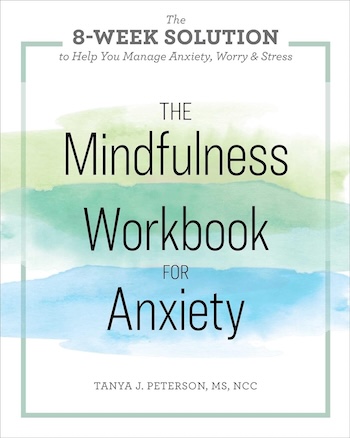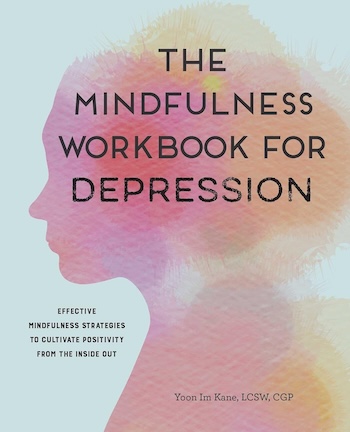Life can get chaotic sometimes causing our minds to work overtime. This process creates unwanted stress, but there are ways to quiet the chaos in our minds.

WHAT IS MINDFULNESS MEDITATION
The goal of mindfulness meditation is to train the mind to stay in the “here and now” by refocusing or distracting the mind. By changing your attention, you deflect the mind from the constant chaos of thoughts that may be taking over. According to cognitive behavioral therapy practices, our thoughts create our feelings such as feeling anxious or feeling depressed. Those feelings, in turn, manifest into our behaviors such as anxiety, panic attacks, and depression. If we can change our thoughts, then we can ultimately improve our feelings and behaviors.
There are different techniques used in the mindfulness meditation process such as breathing, and visualization.
Mindfulness Breathing For Anxiety
By practicing mindfulness breathing, you help to strengthen the mind to stay in the present moment. This process is not about tuning out the world, but rather it is more about tuning in with complete awareness. Allow 5-7 minutes a day to start these exercises and slowly increase the time as needed. These exercises can be done standing, but ideally sitting or lying in a comfortable position. Eyes may be open or closed, but it is easier to maintain focus with the eyes closed.
1. Take a deep breath in through the nose paying attention to the rise in the abdomen, and hold the breath for three seconds.
2. Slowly release the breath through the mouth, and begin again.
3. Allow the sounds around you to be without engaging any thought into them.
If you find your mind wandering away from the breath, which will happen, gently nudge it back to the breath itself.

Mindfulness Visualization
The goal of mindfulness visualization is to create a vision for the mind to focus on that helps you feel calm and at peace. The following are a few sample visuals.
• Floating on a cloud
• A starry night sky
• Being at the ocean and watching the waves
• Sitting by a running stream in the forest
By applying a calming visual along with the breathing exercises, you will find a sense of peace overcoming the chaos of the mind. If a negative thought shows up, do not engage with it because that will give it more energy. Participating with a negative thought only provides fuel to the fire.
Imagine you are in a movie theater and on the screen there are images of your thoughts. Each image will appear and then scroll by until the next image appears. Allow the images to scroll by without engaging with them. Let them be, and they will disappear as long as you don’t interact with them.

HOW MINDFULNESS MEDITATION HELPS ANXIETY
Whatever it is that causes you to feel anxious, you can use distraction techniques along with breathing to bring you back to the present and become more centered within minutes. An example is if you get anxious in your car being stuck in traffic that isn’t moving or at a red light that is not changing which then creates a feeling of panic and lack of control. The following are steps you can take to alleviate the fear and anxiety.
1. Begin with the breathing exercises mentioned earlier.
2. Next, you want to distract your mind by using your senses of sight, smell, touch, and taste. Look around for something to focus on such as a tree. Look at the leaves on the tree and start to count the leaves one by one. You can also watch someone walking and count their steps as they walk.
3. Within a few minutes, your mind won’t be in panic mode because it has been completely distracted.
With visualization distraction techniques, you help to shift the attention away from the thoughts that cause the anxiety to occur.
HOW MINDFULNESS MEDITATION HELPS DEPRESSION
“Mindfulness, the practice of living in the moment, can be an effective and empowering tool for managing depression. The Mindfulness Workbook for Depression will teach you how to practice mindfulness using simple exercises to help you build self-awareness and break through negative thought patterns.“
When you are depressed, it can take over your mind and hijack it sending you into a downward spiral. It starts with feeling sad which then becomes a deeper state of depression. With mindfulness-based cognitive therapy (MBCT), you can stop that downward spiral in its tracks. When we are “mindful” we are in a state of active and open attention in the “present” without dwelling on past mistakes or anxiously worrying about the future. We are in a state of observing our thoughts without judging them as good or bad.
HOW TO LEAD A MINDFUL LIFE (FREE OF ANXIETY)
Mindfulness has many positive benefits along with helping to deal with anxiety and depression; it also helps reduce stress levels which leads to a healthier mind and body. The key is to focus on the here and now, and when mindfulness is done consistently, it can help you regain control over destructive thinking patterns and even allow the positive thoughts to overcome and remain. Practice mindfulness meditation to help achieve inner peace and to quiet the chaos in your mind.
YOU MAY ALSO LIKE:
THE IMPORTANCE OF OFF DAYS IN YOUR WORKOUT WEEK
By Kevin JonesPersonally, I found it tough to take rest days for a long time. I’m a runner, and I know…
8 FOODS THAT MAKE YOUR LIVER HAPPY
Your liver is one of the largest organs in the body. It plays a central role in all metabolic processes. It breaks down…
MASTERING YOUR BRAIN=ABUNDANCE
Your brain – that three-pound hunk of matter located between your ears – is the most sophisticated, complex, and miraculous piece…
COLLAGEN PEPTIDES FOR HEALTH AND BEAUTY
By Esse Johnson The first I’d ever heard of collagen was in cosmetics ads. Generally, it’s in anti-aging creams claiming miracles…
COLOSTRUM BASICS: WHAT IS IT & WHY IS IT USED AS A SUPPLEMENT? (PART ONE)
While it may seem a bit strange for humans to use bovine (i.e. cow) colostrum as a supplement, there are many…
TOP 7 BENEFITS OF ST. JOHN’S WORT
St. John’s Wort (commonly known as hypericum, Klamath weed, or goatweed) is one of the most popular and widely used herbal supplements…









